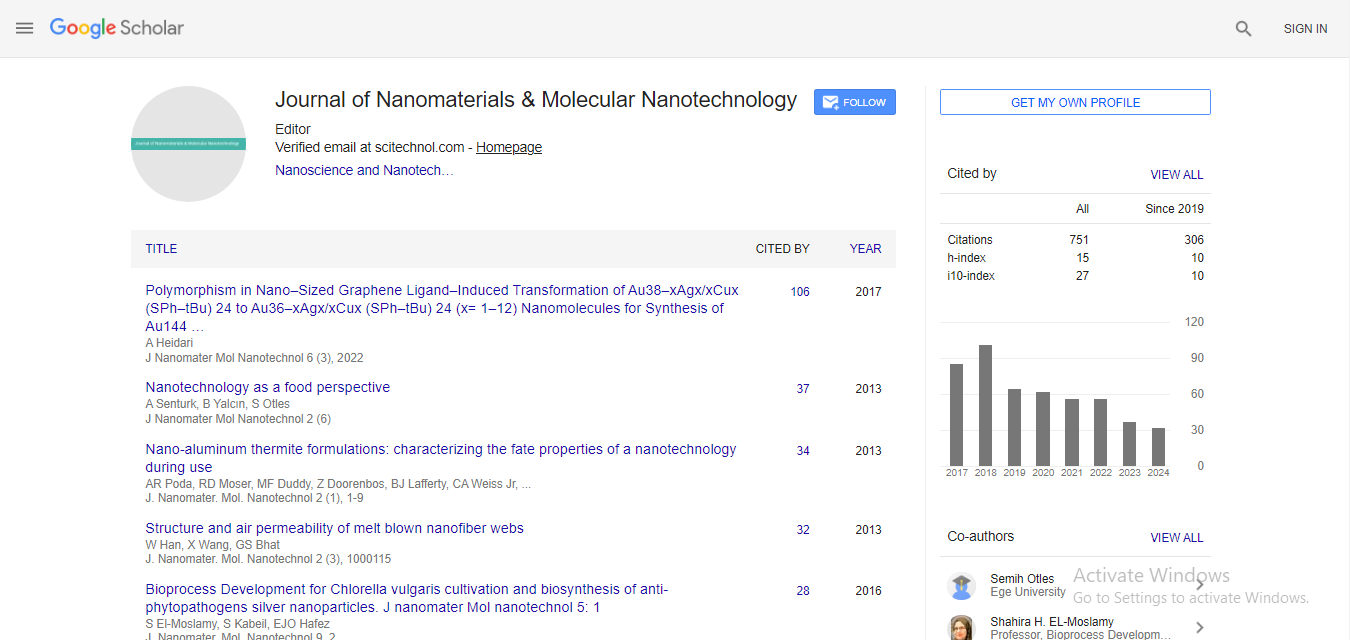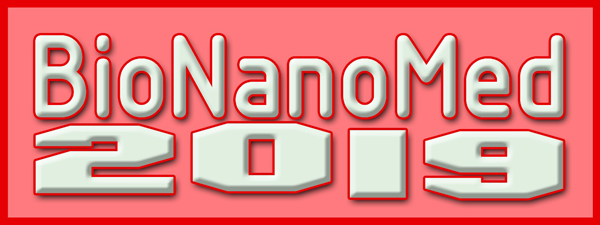Editorial, J Nanomater Mol Nanotechnol S Vol: 0 Issue: 1
Exciting (G)raph�N Medicine and Pharmacy: A (G)ood Point Toward Integrative, Translational, Regenerative and Personalized Medicine!
| Farid Menaa1,2* | |
| 1Department of Pharmaceutical Sciences and Nanomedicine, Fluorotronics,Inc., USA | |
| 2Global Innovation & Trade Inc, San Diego, California, USA | |
| Corresponding author : Dr. Farid Menaa Executive Director, Department of Pharmaceutical Sciences and Nanomedicine, Fluorotronics, Inc., USA Tel/Fax: (+1) 858-274-2728 E-mail: dr.fmenaa@gmail.com |
|
| Received: February 25, 2014 Accepted: March 04, 2014 Published: March 06, 2014 | |
| Citation: Menaa F (2014) Exciting (G)raph´N Medicine and Pharmacy: A (G)ood Point Toward Integrative, Translational, Regenerative and Personalized Medicine!. J Nanomater Mol Nanotechnol S1:e002. doi:10.4172/2324-8777.S1-e002 |
Abstract
Exciting (G)raph´N Medicine and Pharmacy: A (G)ood Point Toward Integrative, Translational, Regenerative and Personalized Medicine!
Nanomaterials offer very interesting physicochemical and biological properties for biomedical and pharmaceutical applications due to their large surface area, small size, and ability to interface/ interact with the cells/tissues.
Nanotechnology is a golden innovative tool for applying nanomaterials, such graphene (G) and derivatives to various segments/areas, including health. In 2010, Geim and Novoselov received the Nobel price of physics notably because they could isolate G, a 2-D hexagonal crystal lattice nanomaterial, from the 3-D nanomaterial graphite, using their famous “scotch tape” technique, and deeply study its electronic properties.
| Nanomaterials offer very interesting physicochemical and biological properties for biomedical and pharmaceutical applications due to their large surface area, small size, and ability to interface/ interact with the cells/tissues (Figure 1) [1,2]. | |
| Figure 1: G-based nanomaterials: interactions, properties and biochemical applications. | |
| Nanotechnology is a golden innovative tool for applying nanomaterials, such graphene (G) and derivatives to various segments/areas, including health [1,2]. In 2010, Geim and Novoselov received the Nobel price of physics notably because they could isolate G, a 2-D hexagonal crystal lattice nanomaterial, from the 3-D nanomaterial graphite, using their famous “scotch tape” technique, and deeply study its electronic properties [3,4]. | |
| G-based nanomaterials, including graphene oxide (GO) and G-hybrid nanocomposites, are fast emerging as green, highly scalable and cost-effective “two-dimensional wonder materials” due to their unique and flexible structures (e.g original planar structure for G), their easy synthesis/isolation/production (e.g. by exfoliation, epitaxial growth), remarkable tunable properties such as electrical (i.e. high electrical conductivity), chemical (i.e. high stability), optical (i.e. high sensitivity) and mechanical (high strength) [5-7]. | |
| G is being exploited from electronics (e.g. sensors/field effect transistors - FETs) to medicine (e.g. biomedical imaging, regenerative medicine, tissue engineering, biotargets discovery, drug screening) and pharmacy (e.g. new generation of drug delivery systems). Thereby, G and derivatives represent premium nanomaterials for the development of highly reliable biosensors (i.e. in terms of sensitivity, specificity/selectivity, stability, rapidity, reproducibility) using fluorescence-, chemiluminescence-based systems (e.g. FRET and CRET, respectively), which are of great interest for advanced real-time imaging and simultaneous quantification of lowly expressed biomolecules or cells [8,9]. Besides, G and derivatives can be exploited as nano-vehicles for drug delivery (e.g. controlled and targeted tumor-site drug release) [2,10]. Further, G and derivatives can be used for accelerating stem cell research, tissue engineering and regenerative medicine (e.g. scaffolds for stem cells growth and differentiation, G-based tissue reconstruction) [11,12]. | |
| Therefore, G and derivatives, including the particular fluorinated ones [11] due to the undeniable importance of Fluorine in bio-medicine and pharmacy and its easy detection [13-15], are revolutionizing the disease prognosis, diagnosis and therapy. | |
| Although the potential relative nanocytoxicity (i.e. nanocompatibility and consequences of uncontrolled nanobiogradability) of these G-based nanomaterials in a clinical setting remains unknown, increasing evidence suggest that the benefits/risks ratio is promising enough for translational and personalized medicine. Undoubtedly, criteria of international regulatory industrial and healthcare guidelines need to be met for best quality control marketing and clinical applications. | |
| Eventually, G and functionalized G-derivatives are strived to a bright future, bringing innovations from bench top to bed side, meantime opening the way to the invention of green coupling devices (e.g. CFS spectroscopy-G derived platforms [13]) and innovative theranostics. | |
References |
|
|
|
 Spanish
Spanish  Chinese
Chinese  Russian
Russian  German
German  French
French  Japanese
Japanese  Portuguese
Portuguese  Hindi
Hindi 



